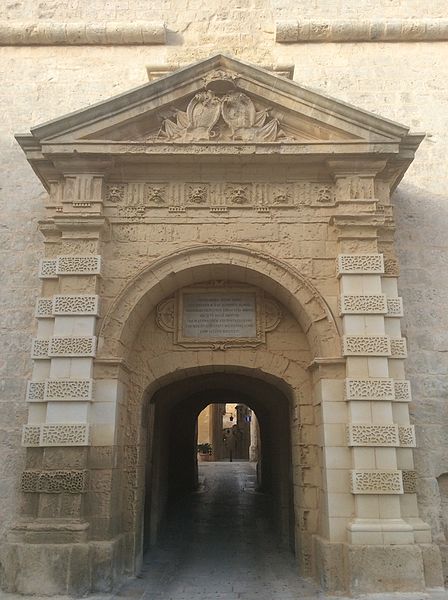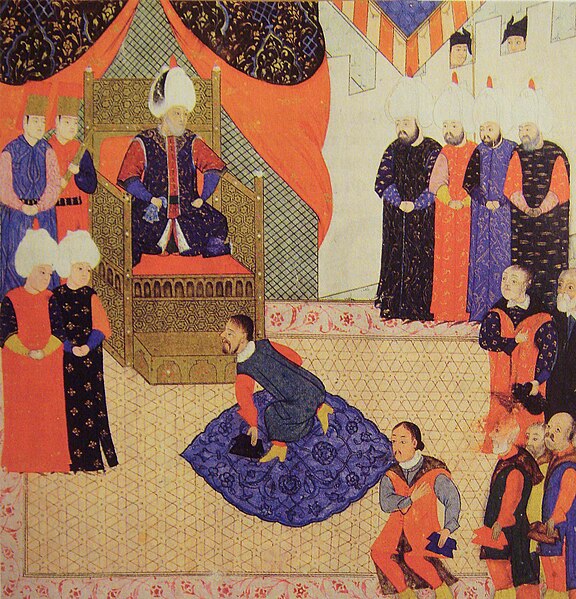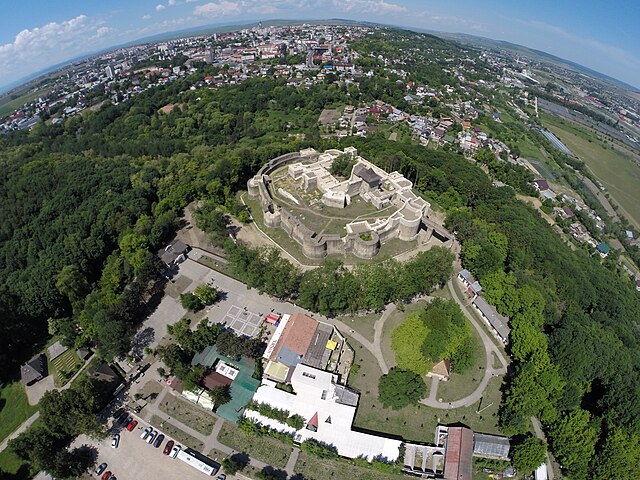Greeks in Malta have a long presence in Malta, which may lead back to ancient times. The archipelago was intensely Hellenized beginning in the 3rd century BC, a process which intertwined with the Christianization of Malta after the 1st century AD. The Byzantine presence was overturned by the Arab conquest of 870, and the surviving Greek community was Islamified. Maltese Christianity of the Byzantine Rite was only preserved in some parts of the country, being especially important in Gozo. These groups formed the basis for a local branch of the Eastern Orthodox Church, revived following Norman conquest in the 1120s. Although marginalized by Catholicism, which became the dominant faith, a Greek-speaking Eastern Orthodox community survived into the 15th century.
The Greeks Gate of Mdina
Birgu's former Damascena Church, originally a center of the Byzantine Rite community
Portrait of Ioannis Papafis
Greeks in Malta in 1846; calotype by Calvert Jones
Iacob Heraclid, born Basilicò and also known as Iacobus Heraclides, Heraclid Despotul, or Despot Vodă, was a Greek Maltese soldier, adventurer and intellectual, who reigned as Prince of Moldavia from November 1561 to November 1563. He is remembered as a pioneer of the Protestant faith in Eastern Europe, a champion of Renaissance humanism, and a founder of academic life in Moldavia. Active within the Greek diaspora in several countries, he was a student of Hermodorus Lestarchus, and worked as a scribe alongside his cousin, Iakobos Diassorinos. Heraclid forged his genealogy several times, claiming to be a member of the Branković dynasty; he was more reliably related to the Byzantine nobility in Rhodes, and claimed the titular lordship of Samos. In the late 1540s and early '50s, he studied medicine at the University of Montpellier, and married a local. A duelist and alleged infanticide, Heraclid fled over the border with the Holy Roman Empire before he could be executed for murder. He was slowly won over by the Reformation, serving the Protestant princes of the Upper Saxon Circle.

Olbracht Łaski's castle in Kesmark (Kežmarok), where Despot planned his attack on Moldavia
John Sigismund Zápolya paying homage to Suleiman the Magnificent in 1566. From a late 16th-century muraqqa
Aerial view over Suceava's princely citadel from the western side. Areni field once stretched on the left-hand side and in the background
Lăpușneanu and his consort Ruxandra with the severed heads of boyars. 1872 etching by Theodor Aman








